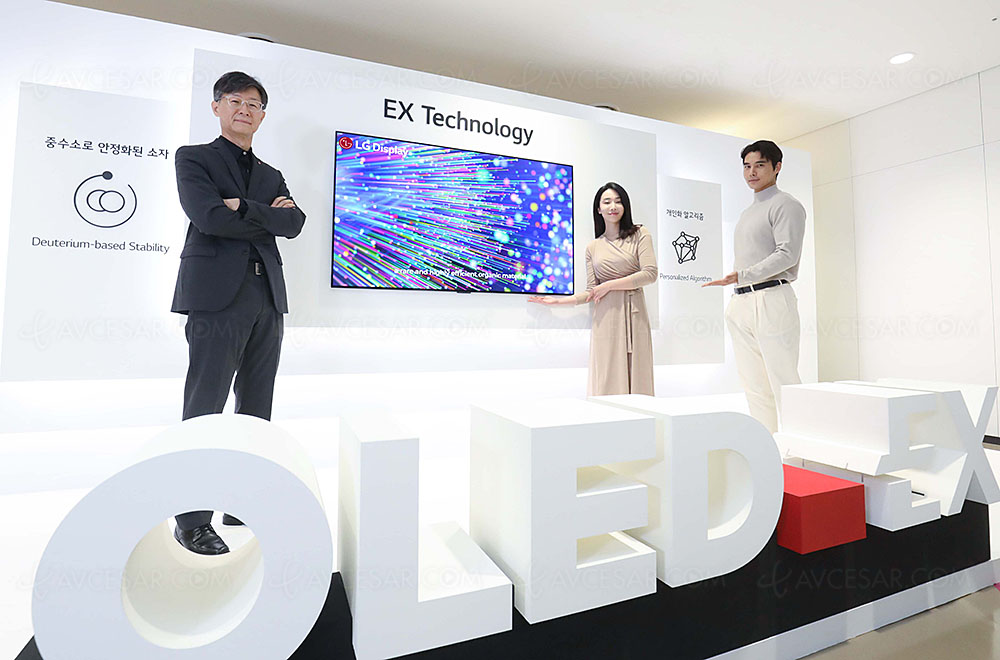As we know, like LCD technology, whose ability to produce an image with perfect black density remains limited, LG Display's White Oled television technology has weak points, in particular its difficulty in generating a peak important light, and especially its inability to display it beyond a few seconds. The fault of the heat-sensitive organic diodes which risk “marking†in the event of prolonged high brightness. A point that handicaps Oled TVs in the presence of HDR signals for example, or with the latest generation video games which appear less flamboyant than on a premium LCD TV.
Oled EX panel announced at CES in Las Vegas 2022
Aware of the fact, the firm LG Display works year after year to correct this weakness. After the Evo panels equipped with a green diode that appeared in 2021 on the LG G1 TV series (click on the LG OLED5G1 product reference to discover its full test by the AVCesar.com editorial staff), after the introduction of an aluminum plate at the back of the OLED panel acting as a heat sink on the LG G2 series, LG Display plans to use OLED EX technology on large diagonal OLED TV panels for an announced brightness boost of 30 % (see our CES 22 news > New Oled EX TV panel from LG Display, 30% more brightness?).

Micro-lenses on the Oled tiles for even more light
But LG Display, according to our colleagues from The Elec site, is exploring other ways to further increase the peak light of its Oled panels, by an additional 20% compared to the Oled EX specimens. The experimented process lies in adding micro-lenses to the Oled TV panel, the purpose of which is to optimize the path of the light generated by the diodes, to direct it entirely outwards, i.e. on the panel side. Thus, if leaving the factory a classic OLED panel displays a luminous peak of approximately 800 nits and an OLED EX approximately 1,000 nits, a panel equipped with micro-lenses should reach a peak of 1,200 nits. Another positive point, this better light efficiency would also have repercussions on energy efficiency, again improving, for lower final consumption.
Adaptation of LG Display production lines from 2022
Namely, our Asian colleagues specify that, if this technical process is validated by LG Display, the Korean company should make the necessary modifications to one of its two OLED panel production plants, either in China in Guangzhou, either in Paju in South Korea. Namely, micro-lenses are already used in some LCD/LED TVs on the market (TCL X925 Pro) and some smartphones (Samsung Galaxy S21 Ultra).
